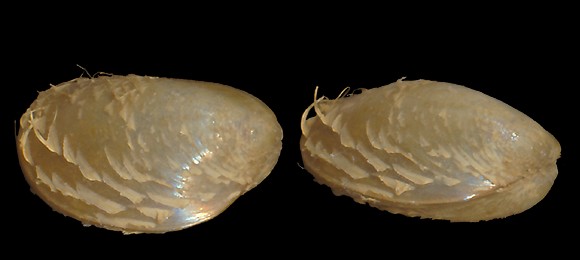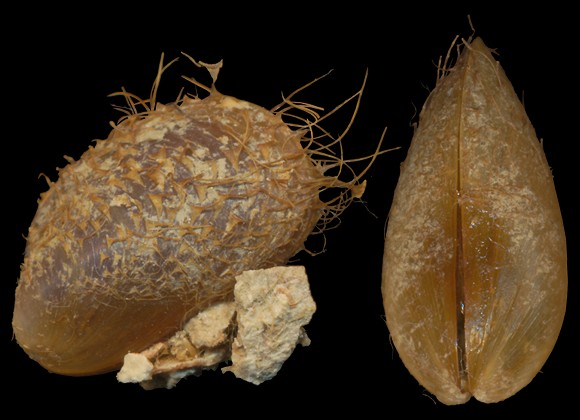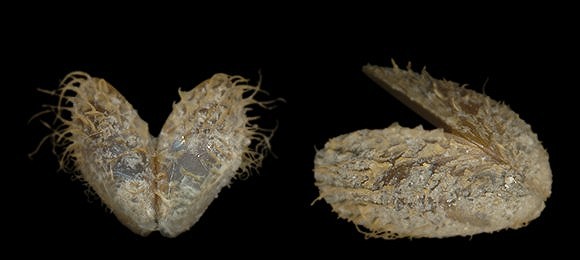
Iceland, NW Russia & Norway to Baltic, northern North Sea, western coasts of British Isles; English Channel to Morocco, Mediterranean, Black Sea. « Attached by the byssus and nestling in crevices or among epifauna including horse mussel beds. Low in the intertidal to moderate shelf depths » (MBSBI).
Original taxon: Modiolus phaseolinus.
Synonyms: imberbis, laevis, molina, radiata…
80-100m deep, Capraia island, Livorno, Toscana, W. Italy. 5,1mm.

« Shell conformable with its name, obliquely expanding from a blunt point to a rounded edge, remarkably convex and gibbous, rather solid and glossy. Sculpture, fine but irregular lines of growth. Colour beneath the epidermis yellow tinged with purple. Epidermis thick, yellowish-brown and of a darker hue on the sides, exfoliated in all parts except towards the anterior margin, and rising into numerous stiff beard-like points of different lengths, those on the lower part of the ventral side being the finest. Margins thick, incurved on the ventral side, rounded behind, both these margins being nearly parallel, semicircular in front. » – J. G. Jeffreys: British conchology vol. II, London 1863, via BHL.
This scaly perio is typical.
430m deep, off Gallipoli, Lecce, Puglia, S. Italy. 9,5mm.

« Byssal sinus narrow but distinct. Beaks small, blunt, and inflected, lying horizontally on the point of the shell, slightly diverging from each other, and placed at a very short distance from the anterior margin. […] Inner edge of the dorsal margin finely crenulated across. Hinge thick and prominent, also finely crenulated or toothed. Inside nacreous and iridescent, purplish-yellow, and stained with brown on the dorsal side and in front. Scars indistinct. » – op. cit.
70-75m deep, in a colony of Bryozoans Flustra foliacea (Linnaeus, 1758), off Seven Stones reef, Scilly islands, west of Cornwall, SW. England. 4,5-6mm.